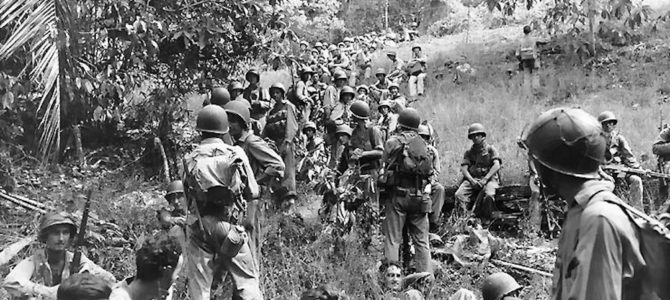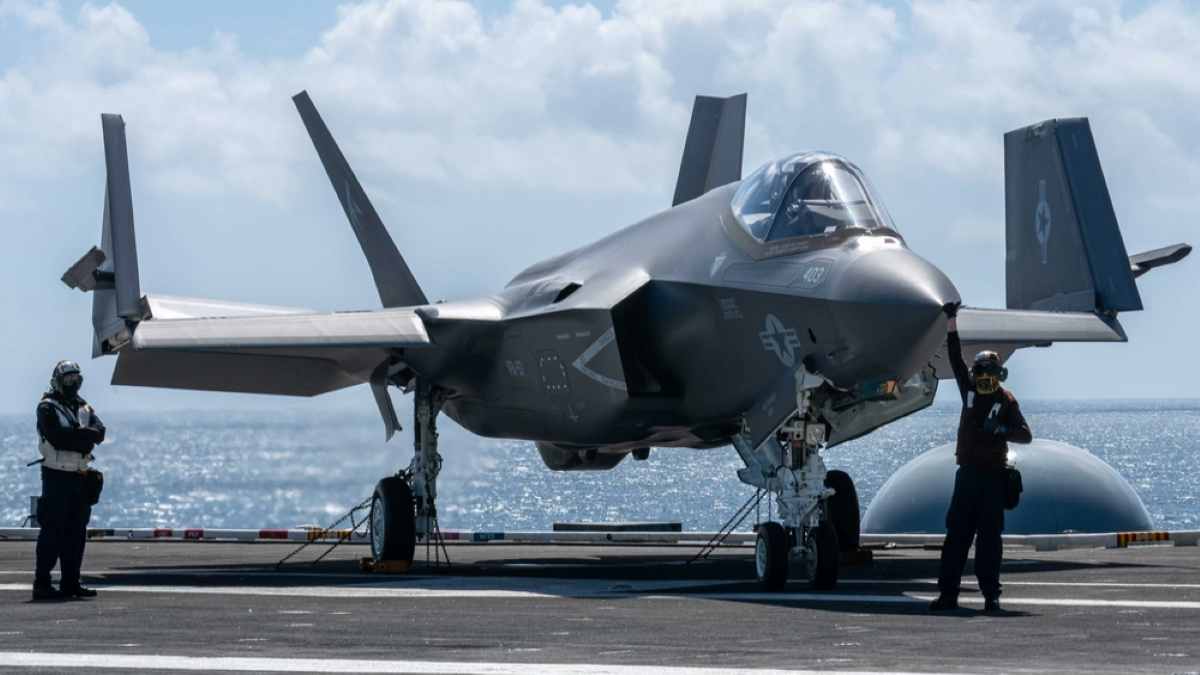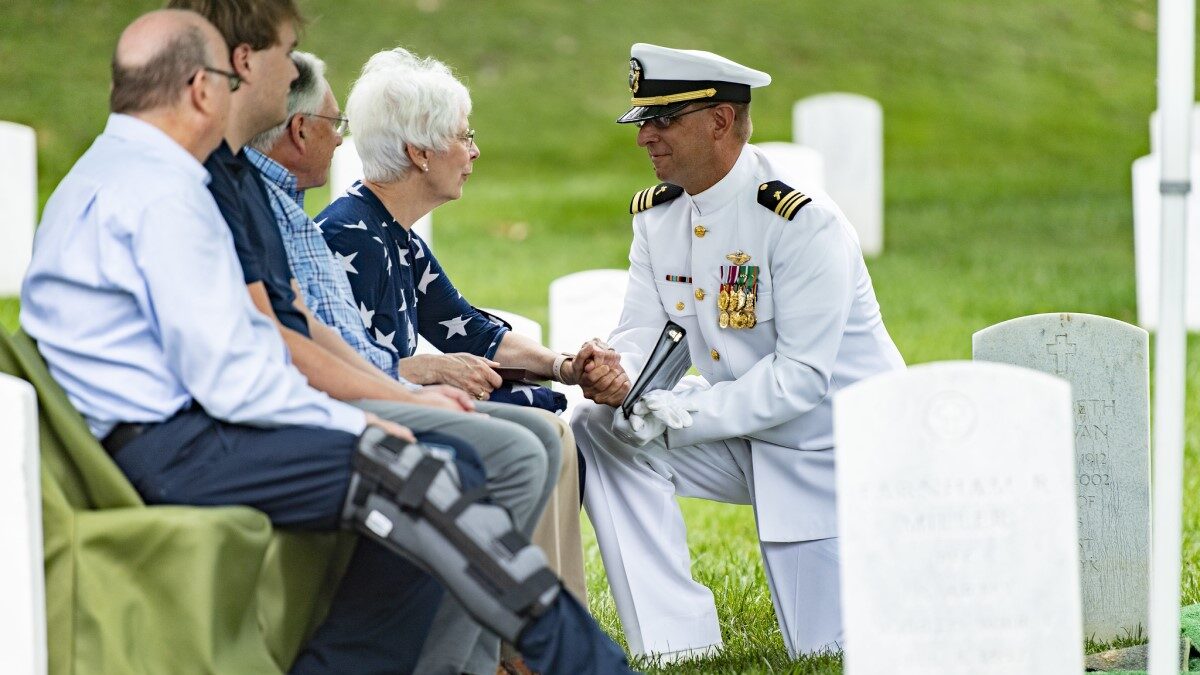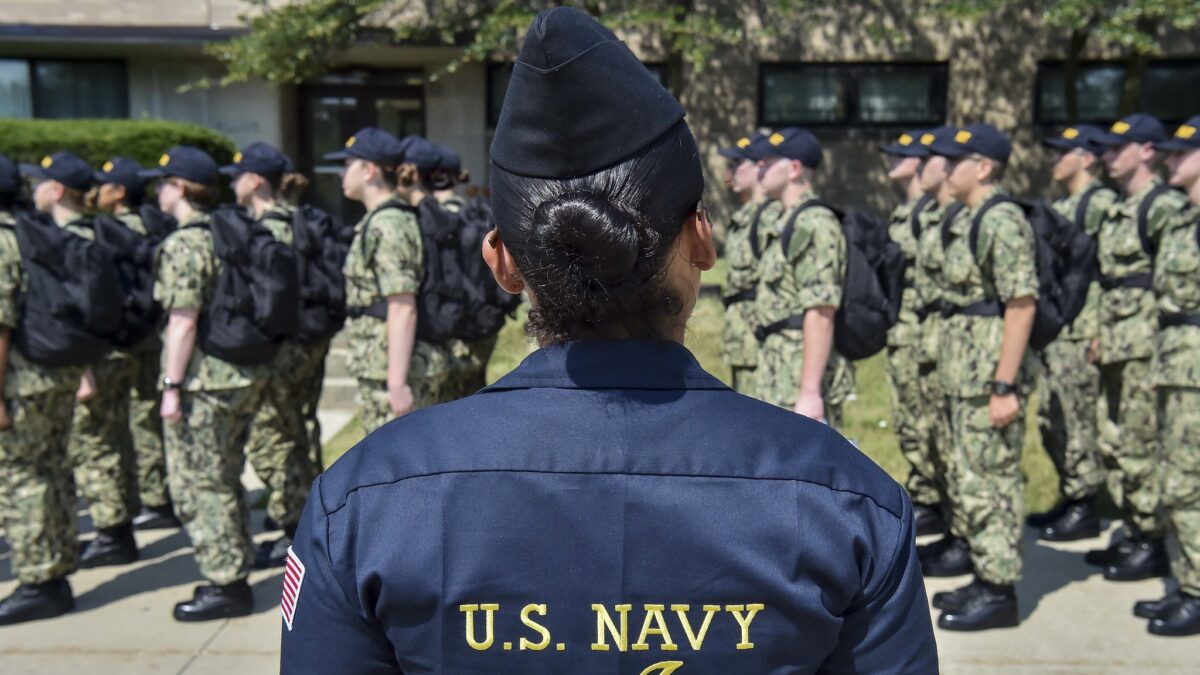
Sometime shortly after midnight, August 21, 1942, 200 men of the Ichiki Butiai—or Ichiki Detachment—the 2nd battalion of the Japanese 17th Army, silently approached the east bank of the Tenaru River. Cloaked in darkness, Col. Ichiki’s shock troops left the cover of coconut groves and crossed the narrow sandspit separating the river from the sea to hit the line of American 1st Division Marines. They did not know that the Americans were waiting for them. The Battle of the Tenaru River, the first major land engagement in the first major offensive by the allies against the Empire of Japan was about to ignite.
And yet that’s not entirely true. Surely, the identity of few other bodies of water have ever been so bungled. It is known as the Tenaru River due only to a U.S. intelligence mapping error. The Tenaru is actually further to the east. But from this error the battle would take its name, and has popularly stuck. The fight actually took place at the Ilu River, which for reasons both gruesome and practical—it was hardly a river—the Marines instead dubbed Alligator Creek. This, alas, is a double misnomer. First, it was crocodiles that would later feed on the unrecovered remains of Japanese dead. Second, while the Ilu wasn’t a river, neither was it a creek. It was a tidal lagoon separated from the sea by a sandbar of varying size, depending on the tide.
Whatever it was, little poetry was wasted on it. Machine gunner Robert Leckie, in his book “A Helmet for My Pillow,” describes the stagnant body as “crested with scum and fungus; evil…and green. If there are river gods, the Tenaru was inhabited by a baleful spirit.” Nevertheless, it was there that American forces dug in.
The History Behind Tenaru
Ten days earlier, on August 7, the Marines had landed on the islands of Guadalcanal, Tulagi, and Florida in the Southern Solomon Islands. The strategic importance of taking the islands lay in denying the use of their airfields by the Japanese to threaten the allied supply and communication sea lines between the United States and Australia. While the Marine landing on Guadalcanal was lightly opposed, a day later the Japanese Navy crushed its U.S. counterpart in the Battle of Salvo Island, forcing the American Navy to withdraw without having unloaded much of the heavy equipment and provisions needed by the infantry. Nevertheless, the Marines got busy; first forming a defensive perimeter from around the captured airfield, then securing supplies—included captured Japanese food and equipment—and beginning work to operationalize the landing-strip.
Meanwhile, intelligence gathered from early clashes, Marine reconnaissance, and Australian coastwatchers had alerted the Americans of the impending assault by Ichiki. Anticipating the likely point of attack, Colonel Clifton Cates, the first Marine commander, fortified the sandspit with a barbed wire barrier that extended across it into the surf. This was further defended by several machine gun posts. Several other machine gun crews, including Leckie’s, dug in alongside riflemen further up the riverbank at positions able to rake the coconut groves across the creek. They were supported by mortar teams entrenched behind. It was into this barrier that the Japanese collided.
Rather than force the creek in front of the Marines, Ichiki’s strategy was to hurl an initial sortie across the sandspit to the side. After they had broken through, he would send in the balance of his 900 men and destroy the Marines. It was a battle plan, suggests Joseph Wheelen in his just-published “Midnight in the Pacific,” “born of haste and hubris.” There was no reason for the hurry. Ichiki had landed on Guadalcanal on August 19 with orders to await the rest of his regiment, a few thousand more elite troops due to arrival in a couple days. But inadequate reconnaissance led Ichiki to underestimate the size of the Marine force. Moreover, the miscalculation fed his ego. Having already been fighting for nearly five years, Ichiki believed his hardened, battle-seasoned troops could easily match the raw, if more numerous, Americans.
‘They Came Sprinting And Howling’
Preparing for the assault, Ichiki’s mortars fell onto the Marine lines, accompanied by the snapping sound of Nambu light machine guns and the heavier chug of larger automatics. Then the Japanese charged. As Lecki describes his second volume, “Challenge for the Pacific“:
They came sprinting and howling and firing their rifles, and the Marines were ready for them. Like a train of powder, the American lines flashed alight. Machine guns spat long lines of curving tracers. Grenades exploded in orange balls. Rifles cracked and their muzzles winked like fireflies. Mortar shells plopped smoothly from their tubes, rising silent and unseen until they had climbed the night sky and fallen among the enemy with flashing yellow crashes that shook the earth. Everywhere were tongues and streaks and sparks, orange and white, red and yellow, and the night was herself a slashed and crisscrossed thing.
The Ichikis became entangled in the barbed wire. Heavy Marine fire cut them down. But the bottleneck on the sandspit only worsened. Wheelan tells us the 11th Marines brought their 75mm pack howitzer into the fray, “firing into the penned Japanese soldiers” with devastating effect. Leckie writes:
The barrel of the antitank gun glowed red in the dark. It cut swathes in the ranks of the enemy still pouring to the attack; squad after squad, platoon after platoon, running low with outthrust bayonets, gurgling, “Banzai! Banzai!” But the short squat shapes were falling. Singly, in pairs, sometimes in whole squad groups, the antitank’s canister sickled them to the sand.
Some of the Japanese managed to break through and vicious hand-to-hand fighting ensued. But most never reached the Americans. Despite his escalating losses, Wheelan writes, Ichiki refused his “subordinates’ pleas to regroup and to try breaching the Marine lines upriver.” Instead, he “redoubled his efforts to cross the sandbar, training his 70mm howitzer, mortar, and machine-gun fire on the Marine positions. The Marines hugged the ground in their shallow holes, ‘crying, praying, and cursing all at the same time’…and there were increasing cries of ‘corpsman!’”
Leckie and his partner had seized their unemplaced gun and moved up and down the riverbank, triggering short bursts “to give the impression of massed weapons [and] confuse the enemy.” Their maneuvers served the dual purpose of making it more difficult for the enemy to zero in on their location, as the Japanese had another crew. Wheelan tells their story:
Al Schmid was a loader on a three-man machine-gun crew when enemy fire killed the gunner. Schmid took over, and the other surviving crew member, Lee Diamond, loaded as they fired, hour after hour…then Diamond was wounded in the arm, and a grenade blinded Schmid. Schmid continued firing the machine-gun under Diamond’s directions for an hour until they were evacuated. Marines counted more than a hundred bodies within the range of Schmid’s gun.
The entire three-man crew would be awarded the Navy Cross, the Corps’ second highest decoration for extraordinary valor in combat.
The Lasting Impact Of Guadalcanal
With daylight, it was clear the battle had gone to the Marines. The surviving Japanese, bewildered and unaccustomed to defeat, didn’t know what to do. Many simply charged the American lines or waded into the creek and sea to be cut down or drown. Soon, Marines crossed to the opposite side and swept through the coconut groves, completing the rout. Wheelan offers the grisly tally:
The battle had lasted sixteen hours. Just ten Japanese lived to return to…where 80 men from Ichiki’s landing force had remained behind. The Ichiki Detachment had lost 813 killed. Fourteen Japanese, 12 of them wounded, became the Marine’s prisoners. The First Marines reported 34 dead and 75 wounded. Colonel Cates, who had fought in France during World War I, wrote that he never seen such a “congestion of dead” as he did that day on the sandspit and in the coconut grove.
The battle for Guadalcanal was not over. Major land, sea, and air engagements remained, and the island would not be declared secure until February 1943. But the Battle of the Tenaru River swung the momentum of the campaign toward the allied effort, just as the overall victory at Guadalcanal swung the momentum of the Pacific War entire. American would never be on the defense again.
At Guadalcanal, the Empire of Japan lost two-thirds of their 31,000-plus army troops committed to the fight. Approximately 1,600 Americans were killed. Warship losses were roughly equal, but the Japanese would never equal American industrial ability to replace them and so felt the loses more significantly. Most devastating to the Japanese was the decimation of their elite naval aviators. From this, they would never recover. The most shocking of American losses was the over 5,000 U.S. sailors and Naval officers killed, a figure that easily surpassed the Navy’s accumulated losses in all her history.
Guadalcanal also helped set the viciously brutal tone of the rest of the Pacific War. On the banks of the Tenaru, in the face of Japanese treachery and cruelty, the Marines had learned to give no quarter. “Among the piles of bullet-shredded Japanese corpses,” Wheelan writes, “lived wounded soldiers still capable of killing and wounding. When they cried for help and corpsmen attempted to give aid, they detonated a grenade or shot the caregiver.”
Finally, while Guadalcanal was a laboratory for the strategy and tactics that would prove essential throughout the island-hopping campaign, arguably the greatest victory gained by the Americans was, as Leckie put it, that “The legend of the Japanese superfighter had been shot into a sieve and would no longer hold water.” The Americans had proved that the Japanese could be matched and bettered. It was a shattering blow to the Empire. As Rear Admiral Raizo Tanaka admitted, “There is no question that Japan’s doom was sealed with closing of the struggle for Guadalcanal.”









